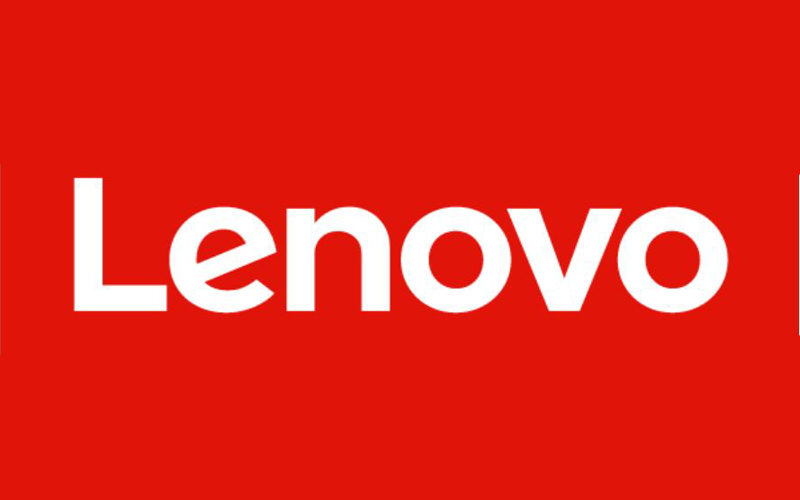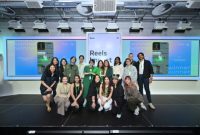- New study from Lenovo and Microsoft shows enormous opportunities in e-learning, but limited adoption of full range of solutions
- Challenges such as such as distraction and social isolation still hamper effectiveness of online education
- New subscription models, smarter collaboration platforms, AI-enabled devices, and virtual reality can unlock future potential
HONG KONG SAR – 24 August 2021 – As schools cross the one-year mark since the rapid shift to virtual classrooms, a new study commissioned by Lenovo and Microsoft has found that both students and educators see enormous potential in online learning, but are just beginning to enjoy its advantages. The biggest barriers to success in online learning have not been a lack of technology access, but low use of available solutions and social challenges stemming from extended periods of remote learning.
Conducted by specialist firms YouGov and Terrapin across 12 markets in Asia Pacific during May 2021, the study examined nearly 3,400 students, parents and educators to understand their assessment of e-learning since the pandemic began, including 218 students in Hong Kong, and explored how technology can further engage students and support learning.
“With schools closed in many countries for the better part of 2020, educators, parents and students alike have grappled with new learning technologies. This study has helped us better understand how educators, parents and students have adapted to online learning during the pandemic, what the real challenges are, and what solutions can be deployed to help make learning technologies more effective,” said Fan Ho, General Manager, Hong Kong and Macau, Lenovo.
“The role of technology has become a much needed lifeline in enabling teaching and learning between students and educators today. Despite the challenges faced over the last year, we admire the resilience and adaptability students and educators have had as classrooms shifted from traditional set-ups to virtual environments. As we move forward, it is clear innovation will continue to transform learning experiences – and we remain committed in supporting the industry with the right tools and solutions so that they are equipped for the new age of education,” said Larry Nelson, Regional General Manager, Education, Microsoft Asia.
Technology in education became the norm during the past year – with mixed results
Across Asia Pacific, more than 80% of students and 95% of educators increased their use of technology during the past year, while 68% of students and 85% of educators spent more money on technology during the past year than they had in the previous year. This trend will continue, with 66% of students and 86% of educators expecting to further increase their spending on learning technology in the coming year.
Educators and students had differing opinions on the impact of online classes on educational performance. Educators were relatively positive about their teaching performance online, with 59% confident that teaching performance had improved, and 24% believing it had been maintained. However, students’ assessment was mixed: around a third of students believed their performance had improved, another third believed it had stayed the same during the period of online learning, and the remaining third believed their learning performance had declined.
Accessibility and convenience are major advantages of online learning
Among students, accessibility (63%) and flexibility (50%) were named as major advantages of online learning, including the ability to access a broad variety of content and materials from all over the world. Additionally, 62% of students and 67% of educators praised the convenience of eliminating the need to commute.
Meanwhile, 64% of educators highlighted the advantages of centralizing the teaching materials in one easily accessible online resource such as Microsoft Teams for Education , along with 50% who commend the fact that e-learning encourages collaborative learning, and allows for more personalised learning and support.
Students and educators know what they want – but are just beginning to leverage existing solutions
Students and their parents said it was “extremely important” that their technology provides security (50%), privacy (52%), flexible performance (26%), and continuous value (29%). Just 17% considered it to be extremely important to have the lowest possible cost for a technology solution.
Educators were also interested in education-specific security (75%) and data privacy (79%), but additionally named collaboration features (64%), student assessment tools (63%), general ease of use (59%), and accessibility features (53%) as extremely important.
However, although 72% of students used a laptop such as a Lenovo Yoga and 29% used a tablet such as a Lenovo IdeaPad to access online learning, few had embraced the full suite of learning solutions: just 38% of students used video conference apps such as Microsoft Teams, only 20% used cloud-based document sharing, and 14% used remote access files. Around 15% of students had access to an online learning management system.
Almost 95% of educators used a laptop such as a Lenovo ThinkPad for their daily teaching. While 76% had used video conference apps, only 56% used cloud-based document sharing, and just 36% used remote access files. Around 66% used an online learning management system. Additionally, 34% had used a virtual reality platform such as Lenovo ThinkReality.
Students and educators find ways to cope with tech support, but distraction, engagement and isolation are barriers
Physical distance did not deter students or teachers from getting the technical support they needed while e-learning; although many school technical support teams were unable to cope with the volatile demand, students and educators found alternative sources of support. Students were more likely (33%) to ask a classmate, friend, or younger household member for help than they were to go to school tech support staff (15%). Similarly, 47% of educators addressed their concerns to the school tech support team, but 32% simply tried to find an answer themselves, 31% asked another teacher, and at least 11% consulted with a nearby teenager.
Around 14% of educators had embraced device-as-a-service (DaaS). DaaS offers a subscription-based model including laptops, desktops, tablets, tech support, software and management services.
Students and educators found the most profound barriers to online learning in the social sphere. More than 60% of students and educators indicated that they experienced weakened social relationships during the period of online learning. The top four factors listed as challenges by students and their parents were distractions at home (54%), less motivation to attend online classes at home (48%), lack of immediate feedback and interaction with teachers/classmates (46%) and social isolation or difficulty in meeting people (41%).
While video conferencing applications provide many avenues for real-time interaction, attending all their classes through a screen proved to be challenging for students. 75% of educators listed “students get distracted or lose concentration during live sessions” as one of the major barriers to e-learning.
New subscription models, smarter collaboration and devices can unlock potential of online learning
“What we see from this study is that there can be enormous benefits from education technologies, but students and educators have yet to embrace its full potential,” continued Amar Babu. “Both students and educators are looking for collaborative, personalized learning – using technologies that can keep them engaged, with the material and with each other. Lenovo is at the forefront of these technologies, with built-in features leveraging Artificial Intelligence, helping create opportunities for online engagement, and providing convenience and reliability.”
Lenovo’s services portfolio supports ongoing learning by bringing end-to-end solutions to schools and universities.
- Lenovo Managed Services equips all devices with cybersecurity software and secure collaboration tools that ensure data protection and student safety
- Lenovo Device as a Service (DaaS) ensures comprehensive technical management, helpdesk, and support for students and educators on and off campus
- Lenovo Hybrid Classroom solutions create more dynamic learning environments with all-in-one smart collaboration systems like the ThinkSmart Hub, making it easy for students and educators to connect, share, and learn remotely.
- VR devices and solutions such as ThinkReality and Lenovo VR Classroom 2 allow educators to further engage and inspire students through virtual reality lessons that enhance students’ understanding of subject matter
As the world adjusts to a new normal, education is entering a new age of teaching and learning. Advanced technologies are paving the way for students to experience immersive learning with real-world applications, and empowering educators to help students continue learning through new and different methods, wherever they may be.
About the Study
Conducted in May 2021, the research surveyed 783 educators in Asia Pacific, along with 669 parents and 1,935 students aged 16 to 25 above about their experience with e-learning during the global pandemic. Respondents surveyed were from Australia, New Zealand, Malaysia, Thailand, Taiwan, Singapore, Hong Kong, Vietnam, Philippines, Korea, India, and Japan.
About Lenovo
Lenovo (HKSE: 992) (ADR: LNVGY) is a US$60 billion revenue Fortune Global 500 company serving customers in 180 markets around the world. Focused on a bold vision to deliver smarter technology for all, we are developing world-changing technologies that power (through devices and infrastructure) and empower (through solutions, services and software) millions of customers every day and together create a more inclusive, trustworthy and sustainable digital society for everyone, everywhere.
About Microsoft
Microsoft (Nasdaq “MSFT” @microsoft) enables digital transformation for the era of an intelligent cloud and an intelligent edge. Its mission is to empower every person and every organization on the planet to achieve more.


















